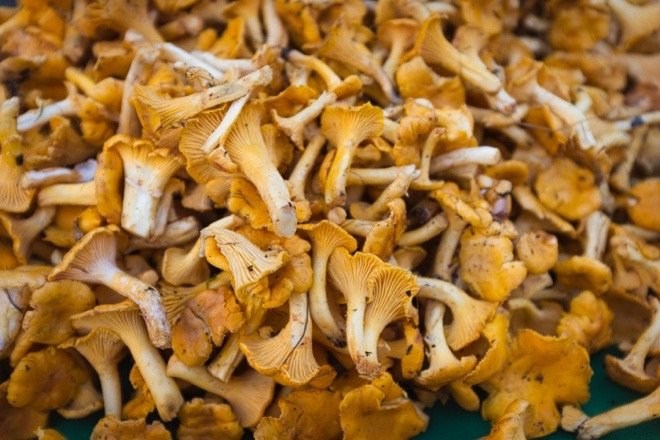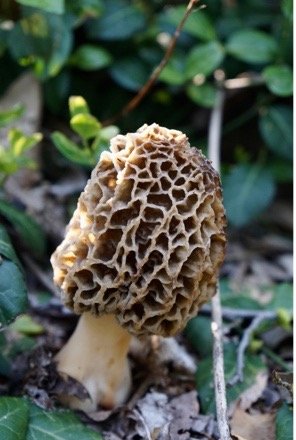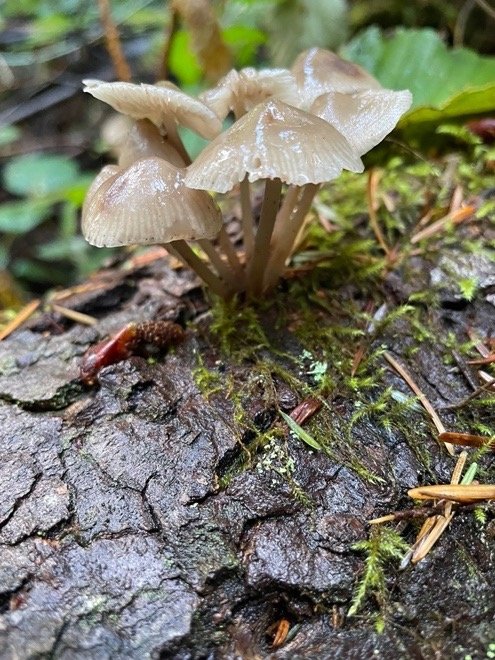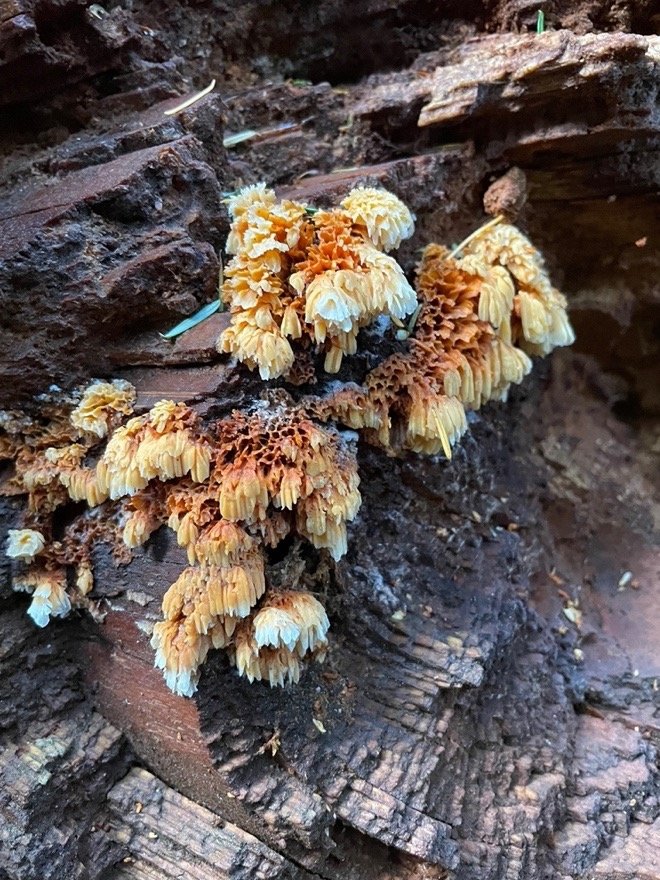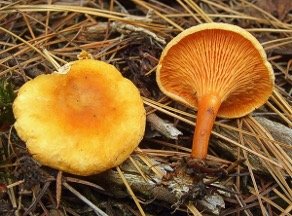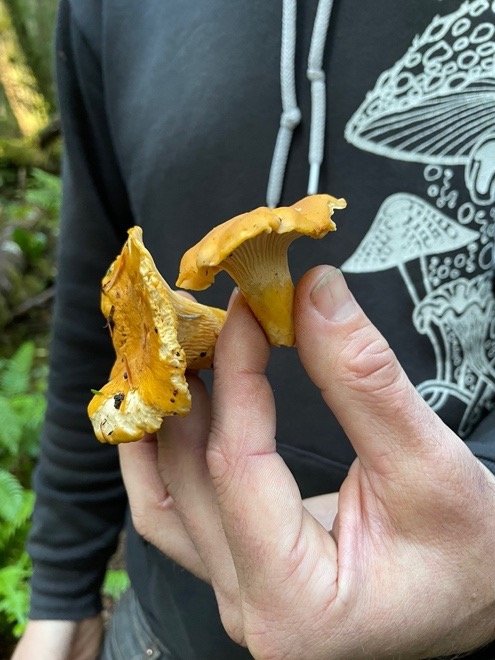Into the Woods
Photo by Mindy Stern
You know the type. Nerdy kids who, at three-years of age, can name each and every dinosaur, and what they ate for lunch. Get them started, and they Just. Can’t. Shut. Up.
Fast forward twenty or thirty years, and they’re now experts on their lifelong obsession. Enter Travis, the mushroom maven. My husband’s birthday present to me this past summer was a Fall mushroom adventure. He found Travis online and arranged a private tour for the two of us. Years ago, when we lived in upstate New York, an emergency room doctor whose specialty was toxicology led groups through the forest, teaching us to correctly identify what can and cannot be eaten. I was excited to freshen up our dormant foraging skills.
It was late October, and one measly night of rain had finally come after Seattle’s driest summer of all time. Just two weeks earlier, the temperature reached a staggering 88 Fahrenheit, breaking the previous record by 16 degrees. Weeks went by without rain. The mushrooms were not happy.
But today, the air was crisp, the ground was moist, and maybe, just maybe we would see some mushrooms.
We met Travis at the trailhead of a forest newly dampened by the overnight rain. Flashlights weighed down both of his back pockets, making his jeans sag. In a thick cotton sweatshirt with a mushroom motif, and a wool cap to keep his head warm, bursts of energy emanated from our guide as he bounded over to greet us.
“I brought some bags to collect with – should I bring them along?” I asked enthusiastically.
“We probably won’t see a lot of edible mushrooms today,” he replied. “But we’ll identify lots of non-edibles.”
Wait – poisonous mushrooms? I thought the point of our tour was to fill brown paper bags with Chanterelles. Or Morels, even better. I was oh-so wrong.
Travis makes a year-round living by guiding enthusiasts through the woods. If he relied solely on finding edible fungi, I guess he wouldn’t have much business. So, he structures his tours around education, and finds ways to make it lively.
“Mushroom people are calling this season weird,” he says. “Places that are normally bursting with options are just getting started.” But while edible mushrooms eluded us completely, we had lots of fun with the “don’t even think about eating me” kind.
Travis prowls his territory with Ultra Violet flashlights, eagerly sharing his knowledge, and literally uncovering a vast selection of fungi. The UV light makes some of the fungi glow in the dark. Check out these two Red Belted Polypores, side by side on a tree. The one on the right is illuminated by the UV flashlight - wow! What a difference.
Polypore on Right, with Guttation (excess water). Photo by Mindy Stern
We learned that millipedes, which look like red worms with feet before they molt, shed their skin on the forest floor as they grow.
Photo Courtesy of Northern Woodlands
We found little circles of millipede casings at the bases of trees. Travis beamed his UV light on them. Like magic, they glow blue.
Photo by Travis Furlanic
The forest was full of mushrooms on hardwoods, conifers, dead logs, and the sides of tall trees. Altogether, Travis identified over a dozen different kinds of fungi. Not one of them was edible.
Photos by Mindy Stern
As our time was winding down, Travis pointed out tiny circles of Slime Mold. Remember paper dots, the colorful sugar candy that comes on a roll of paper? Each of these was smaller than a paper dot, maybe ¼ inch in diameter. Their bright orange color was easy to spot in the forest. Picking them up with a knife edge, we squeezed the dots between our fingers. Ew! Slimy!
Slime Mold
Just before the end of the trail, we ran into a couple carrying a small cloth tote bag. “You found something edible?” we asked in amazement. They opened their bag to reveal a small collection of Chanterelles. “Would you mind giving me one to show my next group?” asked Travis, boldly. They gave him two. A gracious end to a fun afternoon.
Chanterelles, we’d learned, grow on the forest floor, not on trees, usually individually, not in groups. Travis showed us a false Chanterelle, with its round cap and dark center, so different from the wavy cap-edge on the edible delicacy. The gills and color should also help with identification. But are you confident enough to tell the difference? Can’t blame you if you’re not.
How ready am I to go out now and forage on my own? I dunno. I think I can tell the difference between a Chanterelle and the mushroom that looks like it, but can I trust myself not to kill someone or make them seriously sick? Good thing our mushroom maven offered to inspect any future findings. All we have to do is text him a photo, and he’ll weigh in. Meanwhile, I’ll stick to cooking with store-bought fungi. Here’s a recipe I invented for savory, vegan mushroom soup. It’s so creamy, you won’t believe it’s vegan. Enjoy!
Mindy’s Mushroom Soup:
1 ½ cups Sweet Onion, chopped and/or white part of Leek chopped (save the leek greens for later)
1-2 Tbs Olive Oil
16 oz Sliced Mushrooms, preferably Cremini (aka Baby Bella)
5-8 oz Sliced Shiitake Mushrooms, woody stems removed
1 Qt Unsweetened Almond Milk, heated
2 cups Vegetable broth, heated
¼ cup uncooked rice (I use Basmati, you can use any kind)
1 fresh sprig of Rosemary OR the chopped-up leaves of 1 Tarragon stalk (don’t use both – choose either Rosemary or Tarragon). OK to substitute dry herbs.
Salt to taste
Method
Chop onion and/or leek. If using leek, tie the (thoroughly washed) leek greens with kitchen string.
On Medium heat, warm a large empty pot, then add olive oil to coat the bottom
When oil is warm, but not smoking, add chopped onion/leek and sprinkle with salt (reserve leek greens for immersion later). You should hear a sizzle when onions hit the pan, but don’t burn them. Cook on medium heat for 3-4 minutes, then add the mushrooms, stirring to coat with oil. Add another light sprinkle of salt over the mushrooms. The stirring spoon should taste a little salty, but not overwhelmingly so (don’t put a licked spoon back in the pan – yuck).
While the mushrooms are cooking, warm the almond milk. I use a glass or silicone measuring cup in the microwave – it takes about 7 minutes. Meanwhile, heat the vegetable broth.
When Mushrooms/Onions begin to wilt, add the hot broth and almond milk. Keep cooking on medium. If almond milk begins to separate, lower heat slightly and don’t worry - after blending it, it will come together.
As soon as liquids come to a boil, add the rice and stir. Add the bundled leek greens, plus rosemary OR tarragon. Cook for 20 minutes.
Remove from heat. The rosemary leaves should have separated from the stalk. Discard the woody stem and the bundled leek greens (the leek greens add flavor without making the soup look green).
Scoop out 1 ½ - 2 cups of soup and set aside. Blend the rest (an immersion blender is best). Soup will have a thick, creamy texture. Add the reserved 1 ½ - 2 cups to the blended soup so that there are some visible slices of mushroom.
Serve piping hot. Soup can last up to a week in the fridge.


